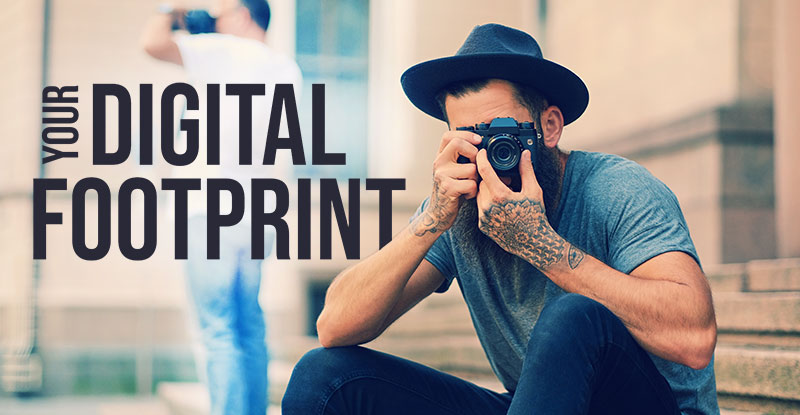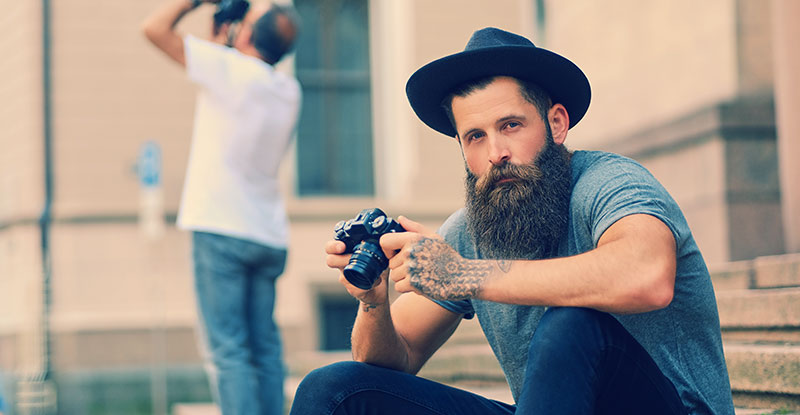Digital Footprint: Your Photos, Your Rights and The Law
Today, pretty much everyone thinks they’re a photographer. Many people have smartphones with better cameras than the top-of-the-range digital cameras from just a few years ago. With good quality cameras in such abundance and within such easy reach, questions arise over the legalities of taking photos, and the ownership of those images.
It’s important to know your rights as a photographer, and to understand the regulations around taking photos of other people, and private places. It’s also important to know how to protect your images in a world that allows people to share images far and wide with the click of a button (or the tap of a screen).

Let’s start with protecting your images:
Important Terms To Know
1. Copyright
Copyright is the legal protection of any work of an artist and is recognized globally. If your photo has been registered, or can be proven to belong to you, then no one is allowed to print or publish it without your permission. In particular, if you discover that someone else is making money from your image, you’re allowed to sue them for punitive damages.
It’s important to note that copyright laws cover only the image. The technique used to capture the image, and the subject matter are not covered. Therefore, someone can go out and replicate an amazing photograph that you took exactly, without being subject to copyright regulations. This is even the case if you were to come up with an entirely original technique to capture the image. You cannot copyright that, and someone could learn the technique and use it for commercial gain.
You can copyright your images several ways. By law, anything you have created—the photographs you have taken—all belong to you automatically, and are covered by copyright regulations for 70 years. You can go further by putting a copyright symbol and your name on the image itself to prevent others from using it without crediting you automatically. Finally, you can officially register your image through the Registrar of Copyrights to get the highest level of protection.
2. Creative Commons
Creative Commons is a non-profit group that came up with a range of licensing options for creative works that allow people to use your photos in different ways. It’s not legally binding, not in the same way that copyright law is. However, it’s a nice way to share your work and allow people to make use of it.
Their licenses include Attribution, Non-Commercial, and other options. Attribution and Non-Commercial are the most common two. The first requires the user credit you on their publication, but they don’t have to pay to use it. The second allows people to use the image for free, but only for non-commercial projects.
3. Public Domain
Public domain refers to when a creative work is widely available, and anyone is allowed to use it for free for any purposes. Images that are older than 70 years fall into the public domain because the copyright on them has expired.
Another way that photographs can fall into the public domain is if you give up your copyright. An example of this is if your image is used without your permission on a number of websites, but you don’t make any efforts to have the image taken down, or request that you be credited.
Your Rights When Shooting In Public
Knowing your rights about shooting in public spaces is essential, especially if you want to take your photography seriously as a business.

1. People
If a person is in a public space, you’re legally allowed to photograph them and use their image for financial gain. However, if you want to sell that image for commercial use (advertisements and other such uses), you must have model release forms. You can sell those images for editorial use (news items, etc.), without any release. This is how paparazzi work, by taking photos of famous people in public spaces, and selling the images to tabloids. You can also use these images in your online portfolio or in print to show potential clients your work.
For many photographers, it’s just a case of using common sense and common decency to not overstep the boundaries of privacy. If you can see someone is uncomfortable with you taking their photo, it’s best to ask if they mind, and possibly to let them know what you intend to use the photo for.
2. Private Property
You need permission to photograph the inside and outside of any public building. If you want to sell an image for commercial use of something like the White House, you need a permit to take the photo. However, if the White House merely forms part of the skyline of the city, and is not the only focus of the image, you’re allowed to sell that photo for commercial use.
Businesses tend to not allow photographs or video to be taken of the inside or outside of their premises. A family photo or a 3D shot of you outside a designer shop on 5th Avenue is not likely to get you into trouble. However, if you try to take a professional shot of the company’s branding or the products inside, you may get asked to leave. It’s all about having the right permits to take photographs. While these can be difficult to obtain, they are necessary if you want to stay on the right side of the law.
3. Ticketed Events
Any event that requires you to buy a ticket to attend falls under the same restrictions as private property. This includes concerts, sporting events, and expos. If you are invited as press, you’re allowed to sell images of the event for editorial purposes, but not for commercial use.
The laws surrounding photographs and photography are clear, and if you are not sure what you are doing is legal, it’s always best to check. Ignorance is no excuse, and shooting in restricted spaces or reproducing another photographer’s work can get you into legal trouble.
































































































